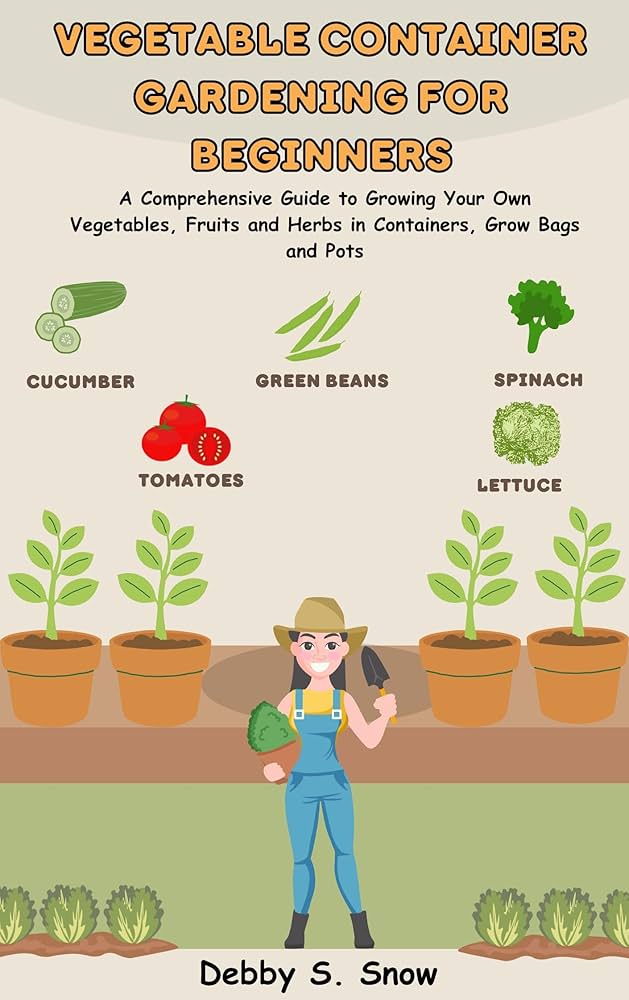Introduction
Creating a vegetable garden in pots is an excellent way to enjoy fresh, home-grown produce without needing a large outdoor space. Whether you live in an apartment, have limited yard space, or want to add greenery to your balcony, container gardening offers flexibility and convenience. This guide explores how to make a vegetable garden in pots, covering essential tips, best practices, and expert advice to help you grow healthy vegetables successfully.
Why Choose a Vegetable Garden in Pots?
Growing vegetables in pots has several advantages:
- Space Efficiency: Ideal for small or urban living spaces.
- Mobility: Easily move pots to maximize sunlight exposure or protect plants from harsh weather.
- Soil Control: Use high-quality soil to ensure nutrient-rich growing conditions.
- Pest Management: Easier to monitor and control pests compared to ground gardens.
According to the National Gardening Association, container gardening has grown by 20% in recent years, highlighting its rising popularity among urban gardeners.
Selecting the Right Containers for Your Vegetable Garden
What Types of Pots Work Best?
Choosing the right containers is crucial for your vegetable garden’s success. Consider these factors:
- Size: Most vegetables need at least 12 inches deep pots; root vegetables like carrots require deeper containers.
- Material: Terracotta pots provide breathability but dry out faster; plastic pots retain moisture longer.
- Drainage: Ensure pots have drainage holes to prevent waterlogging.
Recommended Container Sizes for Common Vegetables
| Vegetable | Minimum Pot Size |
|—————–|———————–|
| Tomatoes | 18-24 inches diameter |
| Lettuce | 6-8 inches deep |
| Carrots | 12-16 inches deep |
| Peppers | 12-14 inches diameter |
Choosing Soil and Fertilizers for Container Vegetables
High-quality soil and proper nutrition are key to thriving container vegetables.
- Use a well-draining potting mix formulated for containers, not garden soil.
- Incorporate organic matter like compost to improve nutrient content.
- Fertilize regularly with balanced, water-soluble fertilizers rich in nitrogen, phosphorus, and potassium.
Expert gardeners recommend feeding container vegetables every two weeks during the growing season for optimal growth.
Best Vegetables to Grow in Pots
Some vegetables thrive better in containers due to their size and growth habits:
- Leafy Greens: Lettuce, spinach, kale grow quickly and require less space.
- Herbs: Basil, parsley, cilantro add flavor and are easy to maintain.
- Root Vegetables: Radishes and carrots do well in deep containers.
- Fruiting Vegetables: Cherry tomatoes and peppers can flourish with proper care.
Growing a variety of these vegetables allows for a continuous harvest and maximizes your container garden’s productivity.
Essential Care Tips for a Successful Container Vegetable Garden
Sunlight and Watering
- Most vegetables need 6-8 hours of direct sunlight daily.
- Water consistently; containers dry out faster than ground soil.
- Check moisture daily and water when the top inch feels dry.
Pest and Disease Management
- Inspect plants regularly for pests like aphids and spider mites.
- Use organic insecticidal soaps or neem oil when needed.
- Remove diseased leaves promptly to prevent spread.
Seasonal Considerations
- Rotate crops each season to maintain soil health.
- Protect containers from extreme cold by moving indoors or insulating pots.
Conclusion
Making a vegetable garden in pots is a rewarding and practical way to grow your own food, especially when space is limited. By selecting appropriate containers, using quality soil, choosing the right vegetables, and maintaining consistent care, you can cultivate a vibrant and productive garden. Whether you’re a novice or an experienced gardener, container vegetable gardening offers an accessible path to fresh, nutritious produce. Start your potted vegetable garden today and enjoy the satisfaction of homegrown vegetables at your fingertips!
